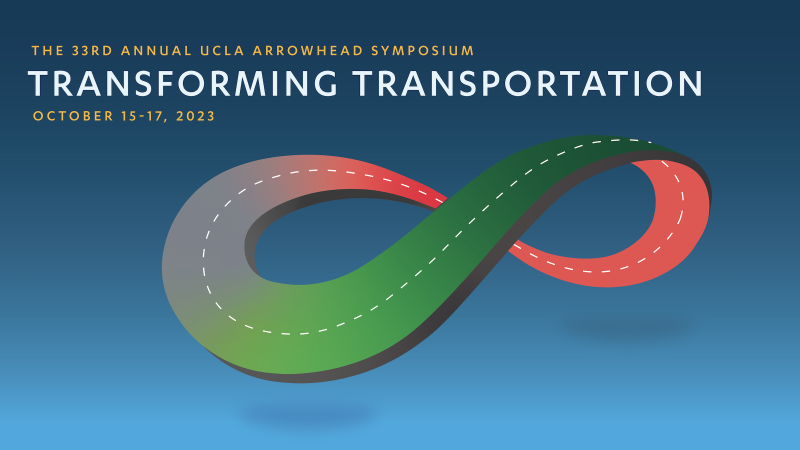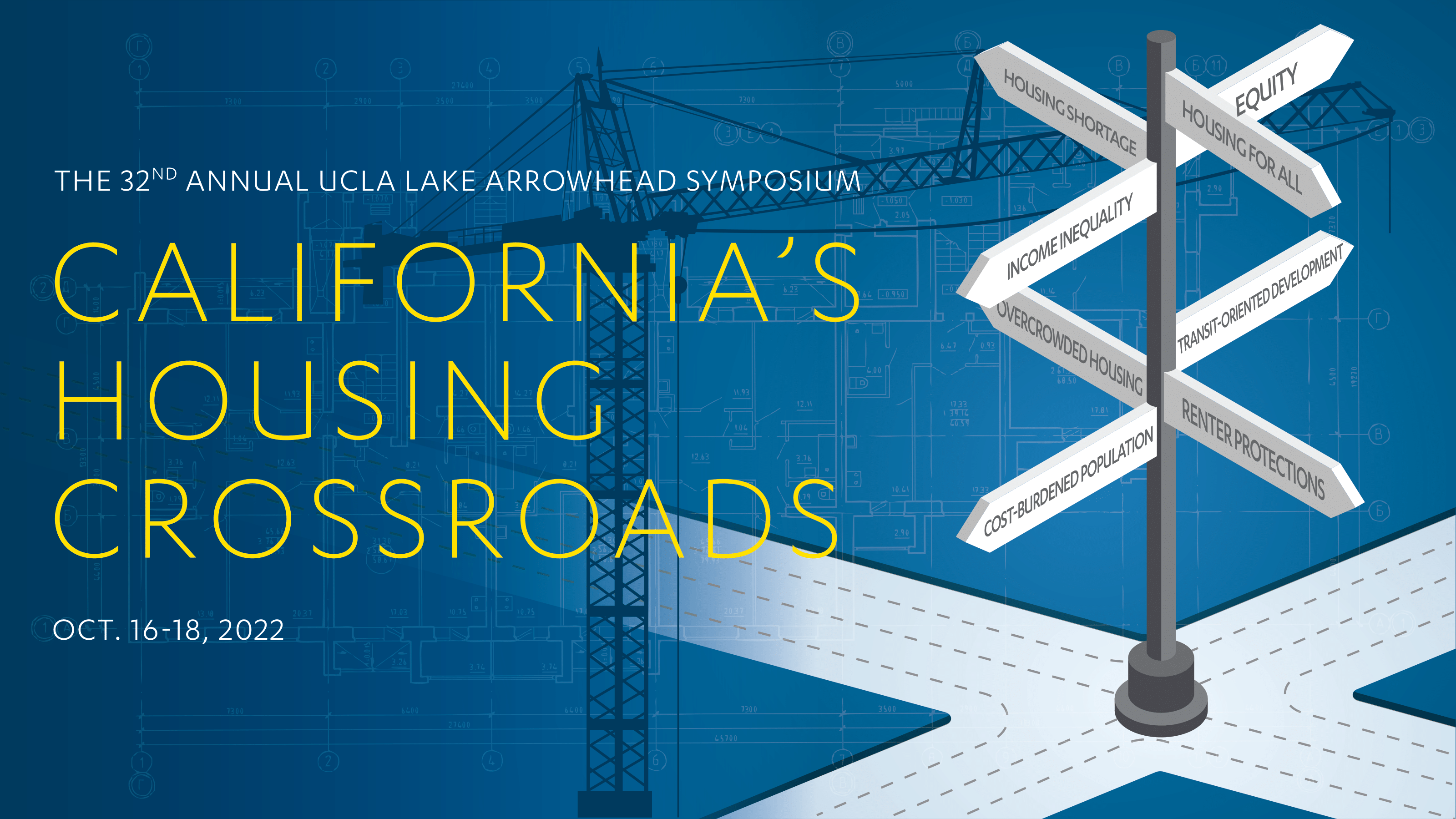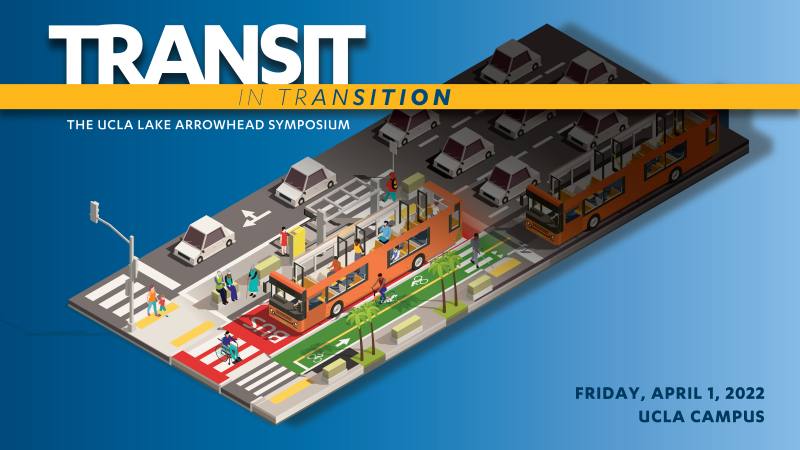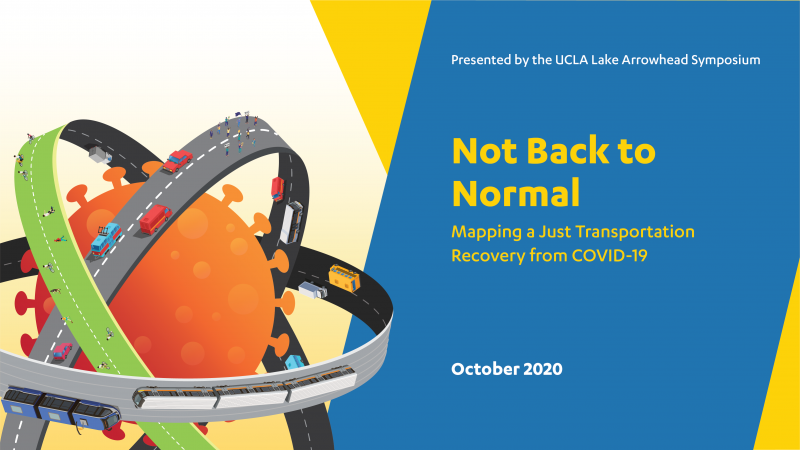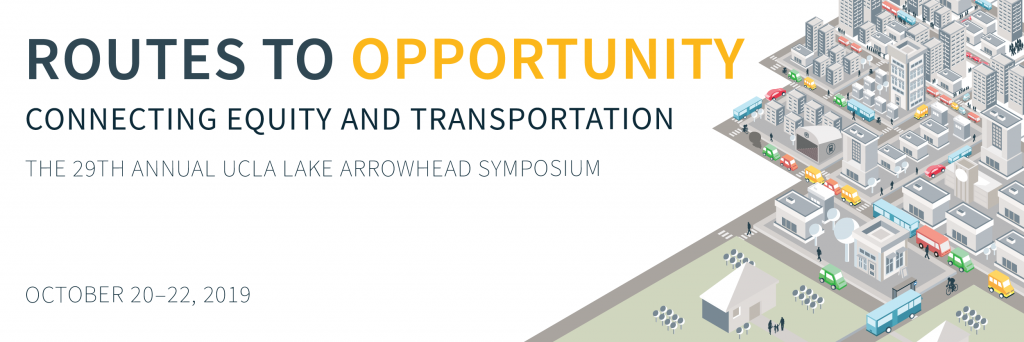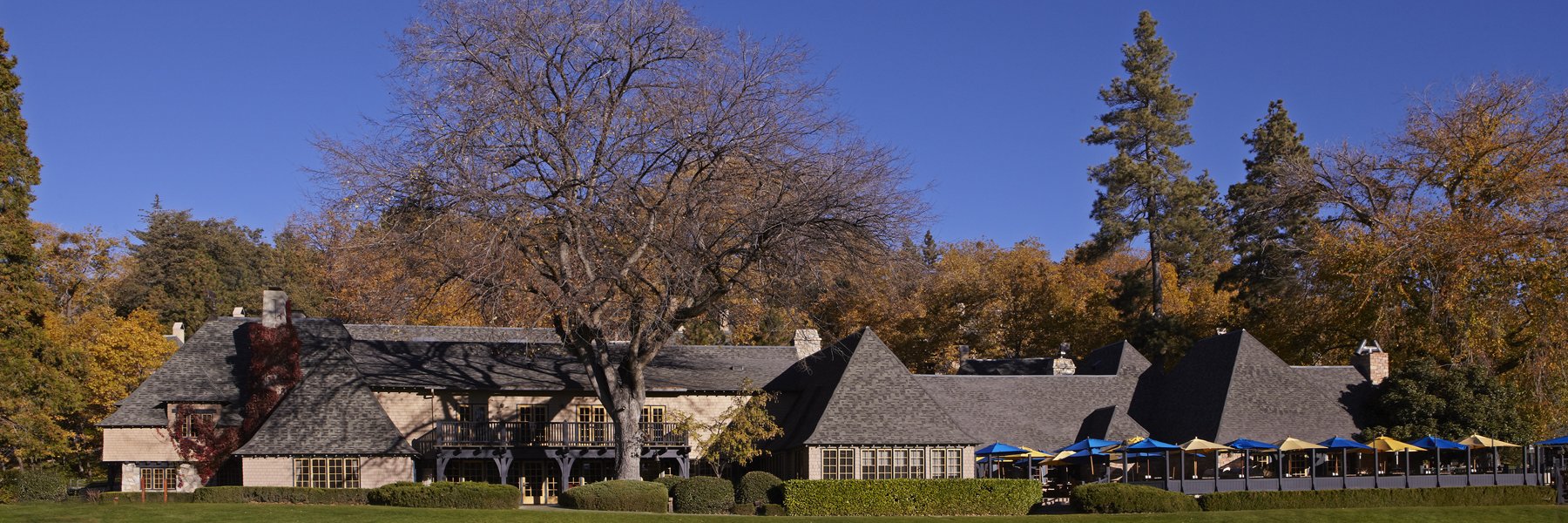
The annual UCLA Lake Arrowhead Symposium hosts leaders and stakeholders from the public, private, non-profit, and academic sectors for thoughtful discussion around the connections and conflicts between transportation, land use, and the environment. For the past 30 years, attendees have tackled the local policies, influences, and consequences related to climate change. Past topics include:
The discussion of Global Climate Change, Local Growing Pains launched by the 2017 Arrowhead Symposium considers the latest research, and most innovative new practices from around California and the globe, around key questions of land use and climate. How can we get the transportation outcomes we want by allowing the housing we need? How can we better integrate climate action planning with existing housing and transit plans? How can new technology influence transportation choices and climate behavior?
Mandates for more environmentally sustainable transportation systems have increased, but systems of transportation finance have grown less predictable. Planning intelligently for more efficient, effective, and equitable transportation systems will require more sustainable systems of transportation finance.
Technology continuously changes travel and urban life – so why do plans so often extrapolate a continuation of past trends rather than a projection of future changes? This kind of “fragile” planning must be replaced by resilient, adaptive, “agile” plans that consider many future scenarios and guide learning over time.
“Resilience” is a buzzword at this time of climate crisis, a powerful yet elusive term for planning. In order to defend against the worst impacts of climate change, cities must find concrete ways to bring the idea of resilience into the world of public policy and practice.
In the face of great uncertainty around technological change, the public sector must learn how to respond quickly and effectively. New institutions, regulations, and systems are needed to manage transportation systems, influence local policy, and deal with a changing world.
As population and travel continue to grow, mainstay sources of revenue for transportation and land use systems have lagged. Given the unprecedented scale and urgency of the infrastructure funding crisis, particularly in transportation, what strategies are needed to address public finance shortfalls in the short- and long-term?
The role of energy sources is increasingly central to the discussion around transportation. Will we rely on technological advances to improve our oil extraction techniques, better and more efficiently manage our supply, and reduce consumption? Or will we transition to alternative forms of energy?
Transportation and land use infrastructure drives much of our decision-making around energy, green technologies, and how we consume resources. How can we best evaluate, pay for, and manage infrastructure projects in the face of fiscal and political challenges?
In the face of an economic downturn, some argue that recovery depends on a switch to greener technologies, jobs, and policies. Others suggest that environmental goals, no matter how laudable, ought to be put on hold until the economy and tax revenues rebound.
Urban land development and the use of transportation systems will shift with new economic, social, environmental, and technological trends in the next 5, 10, or 20 years. What should planners, forecasters, and policymakers in cities know to better prepare for an uncertain future?
California and the West will experience significant population and employment growth in the coming decades. What are the economic and demographic forces behind this growth, and what are the implications for land development, housing, travel and traffic, and energy and water consumption?
Hurricane Katrina cast the link between local land use and transportation systems and global weather systems and energy markets in the sharpest possible relief. What are local, state, national, and international policymakers doing to cope with the connection between economic growth and environmental sustainability in effective and affordable ways?
Cities, regions, and their transportation systems are central determinants of public health. Examining public health trends related to transportation, land use, and air quality, risks and safety, emissions and exposure, and physical activity and urban form can diagnose the problems and prescribe the most effective solutions.
Goods movement, both within cities and between cities, is increasing faster than any other type of travel, with significant effects for urban and rural areas, especially along major highways and rail lines and near air- and sea-ports. Increasing attention from policymakers and analysts must explicitly focus on the connections to land use and the environment.
The public finance of transportation systems and the public regulation of land use profoundly affect private investment decisions of developers, location decisions of employers and residents, and travel patterns of people and goods. What are the links between regulation and behaviors, and what are the environmental consequences of intensified land development and growing personal and commercial travel?
Chronic traffic congestion is a significant drag on the economy, costing American households and businesses billions of dollars each year, and vehicles stuck in traffic increase emissions, exacerbating air quality problems. Proposed solutions to congestion are many, though consensus about which to pursue has proven elusive.
Despite enormous recent commitment of public resources to the modernization and expansion of transit services in cities, suburbs, and small towns around the U.S., concerns over costs and effectiveness persist. What are the creative and unique approaches to reinventing transit that would work more efficiently, effectively, and equitably in our cities and regions?
Will the projected dramatic growth for California and the West really materialize? If it does, it will bring key policy questions about where new jobs locate, where new residents live, how they get around, the environmental consequences, and whether policymakers and planners should be encouraging, accommodating, managing, or discouraging growth in the first place.
Global economic integration and technological advances have combined to significantly increase the movement of people, goods, and information. What policy choices does this present to local leaders, and how do they navigate the complicated institutional arrangements governing inter-regional travel and trade between regions, states and nations?
As travel by private vehicle grows faster than the population, and sprawling, low-density development persists as the dominant form of metropolitan growth, gains from dramatic improvements in vehicle emissions are in danger. Policymakers, planners, and practitioners must consider how our system of transportation finance affects travel behavior, patterns of development, and environmental quality.
Economic growth and prosperity are understood to depend on effective and efficient transportation systems, and major public investments in transportation facilities are often justified on the basis of general economic benefits. What exactly are these linkages, and how do they relate to urban development and air quality policy issues?





